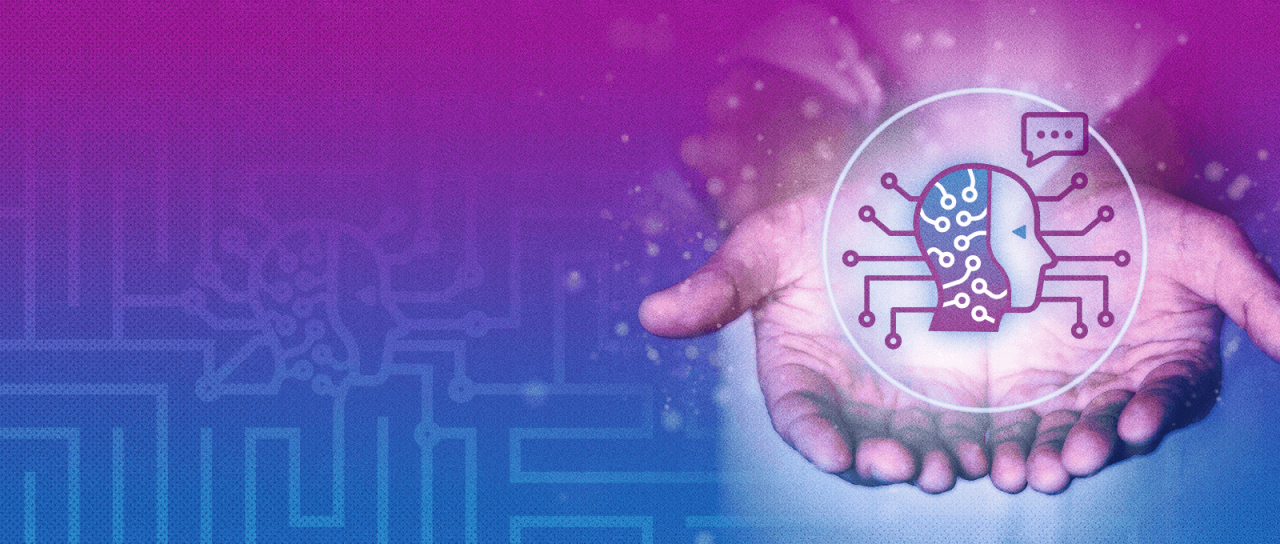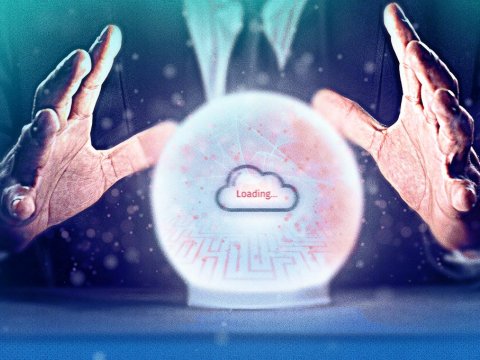2020 Cloud Predictions: Tolga Tarhan
Simply put, there is no stopping the cloud in 2020.
Simply put, there is no stopping the cloud in 2020. Barriers to the cloud will shrink while complex use cases for the cloud will expand. Cloud will continue to grow as technology creates more and more use cases that demand the scale, processing capability and flexibility that only cloud can provide. Whether you’re cloud mature or just cloud curious, these are the top cloud trends to watch in 2020:
PREDICTION 1: Hybrid 2.0 – The Resurgence
One of the most interesting outcomes from AWS re:Invent 2019 is that Amazon is finally embracing hybrid. There was a time when the word hybrid was virtually non-existent in their communications. In 2020, I predict the resurgence of the word hybrid and a new strategy around it. In the early days of cloud computing, many enterprises unsuccessfully tinkered with hybrid and then went all-in on public cloud, avoiding the need to address the technology challenges of hybrid. However, many of the remaining workloads demanded a hybrid approach — where consistent management platforms and programming models were needed, but with the flexibility to deploy to both an on-premises and cloud infrastructure. While many tools have tried to fill this gap, they’ve all fallen short.
The release of AWS Outposts addresses the migration and management challenges head on. What’s special about AWS Outposts is that it separates migration into two separate activities. In days past, you’d have to adopt a new way of building, releasing, monitoring and managing infrastructure. Then, you’d also have to outsource your infrastructure — all in one motion. With a tool like AWS Outposts, you can do that in separate motions. You can stay on-premises while getting used to new programming and management models, then move the infrastructure when you’re ready. AWS Outposts will move the needle for organizations that are ready to be cloudier in their thinking, but can’t justify shutting down existing data centers or have hardware that’s not reached end of life.
Takeaway: Re-visit and re-vise your hybrid strategy.
PREDICTION 2: Kubernetes wins
For organizations that have to run hybrid or multi-cloud workloads, containers will reduce complexity. Containers will become a primary enabler for cloud adoption by providing a platform-agnostic way to package and manage apps. And the question is no longer if, but how. But the real story here is Kubernetes, the chosen container orchestrator for over half of large enterprises.
The key to Kubernetes success is simple: standardization. Kubernetes is just like any other container in that it houses the app, but unlike a stand-alone container, it also defines all of the infrastructure requirements for the application, including networking, scaling and load balancing. All of that is done in a standard way with Kubernetes, and those definitions are relatively portable across hyper scalers.
And as Kubernetes grows, so too will the market for tools to support it. Kubernetes is now the standard tech for deploying infrastructure to support container-based workloads. There is no serious competition. The battle will be in the Kubernetes tools market for deployment, automation, security, auditing and other supporting software.
Takeaway: Kubernetes is the best route to application migration.
PREDICTION 3: Machine learning is gold – the rest are shiny objects
There’s a lot of speculation about the potential for AI/ML I, AR, VR, XR, block chain and quantum computing. The only one to pay attention to is AI/ML. Recent releases of Amazon SageMaker from AWS, Cloud AI from Google and Machine Learning Studio from Microsoft are evidence that the industry is preparing for a machine learning windfall.
Machine learning workloads will represent the next land grab for the hyper scalers. Wherever customers decide to run their AI/ML workloads is where their data goes, and wherever their data goes is where their compute resources will go. The way for hyper scalers to win the cloud is to win the ML workloads. And that’s challenging. For example, AWS is already targeting the full stack with services like Amazon Lex, Amazon Polly, Amazon Comprehend and Amazon Rekognition that provide pre-baked, ready-to-use models, as well as advanced services such as SageMaker that enable and accelerate the development of high quality models.
And the shiny objects? Nascent technologies like AR, VR, XR, quantum computing and blockchain won’t live up to the hype in 2020. No one will be heavily investing in these technologies this year; the market simply isn’t ready yet – and neither are the technologies. Despite the hype, none of them are in a place where they can be reasonably monetized by the industry. They’re fun, they make for great science experiments and everyone wants to dabble because it’s exciting, but if we’re seriously talking about what an enterprise or a mid-market organization is going to put into production, it’s not these technologies.
Takeaway: Keep your eye on the machine learning ball.
PREDICTION 4: 5G gives IoT wings
We’re accustomed to seeing connected everything in our daily lives. But IoT isn’t just a consumer thing, it’s an even bigger trend for industrial and commercial uses. Yes, this is old news. The new thing here is 5G. Coupled with IoT, the proliferation of 5G in 2020 will usher in virtually ubiquitous connectivity.
What does that mean for cloud? Virtually all IoT products are built in the cloud. IoT lends itself very well to the cloud given the scale of storage, data transfer and compute requirements. If you start to multiply the number of deployed devices, the data points that they’re sensing and how often they’re sampling those data points, you’re quickly overwhelmed by the sheer volume of data. And it’s not going anywhere. Companies don’t purge IoT data because the key idea is to gather vast amounts of data and analyze it, and the more data you have, the better it’s able to accurately provide actionable insights and predict trends. That unbound need for storage is nearly impossible to meet on-premises, making the cloud the ideal avenue to both store and analyze the mountain of data that’s unleashed by IoT devices.
We’ll not only have sensors everywhere, but with 5G, we’ll also be able to read and process that IoT-generated data faster than ever. The market is already aligning to help organizations navigate the 5G world. For example, through direct partnerships with leading telecom players, AWS Wavelength puts AWS compute and storage services at the edge of telecommunications providers’ 5G networks to reduce latency. Low latency makes it possible to build applications on low-power devices and offload all of the processing to the cloud with sub-millisecond response times.
We’re going to see those two things – IoT growth and widespread 5G availability – play together in 2020 to enable connected devices that were not economically feasible or even possible before.
Takeaway: 5G unleashes IoT innovation.
PREDICTION 5: The evolution of the sysadmin
I recently heard someone say that cloud would be easier to adopt if there was a standard Windows-like management interface. But that actually defeats the purpose of cloud. Sysadmins aren’t sitting around waiting for an instrument panel for cloud management. In fact, they’re shifting away from the typical point-and-click GUI towards a DevOps approach. What you’ll start to see are traditional sysadmins and network admins evolve more into engineering roles. They’ll get more comfortable with writing infrastructure as code, source control, continuous delivery and automation. The market isn’t looking for another abstraction layer on the cloud — it actually prefers adopting the cloud natively.
Native cloud adoption also changes the landscape for headcount. IT talent that used to be focused on one aspect of the delivery chain will start pursuing a more holistic view of the entire technical environment. Once they see the efficiency and productivity payoffs, companies will begin to retool and retrain to cultivate DevOps or SRE methodologies. Expect to see more IT professionals adopt more of an engineering mindset around infrastructure and application management to drive results and their careers to the next level.
Takeaway: DevOps engineers will cannibalize the traditional sysadmin.

Cut Straight to the Tech Trends That Matter
About the Authors

CTO
Tolga Tarhan
As CTO of Rackspace Technology, Tolga Tarhan leads the vision, driving innovation, and strategy for our technology offerings. With more than two decades of experience leading product and engineering teams and as a hands-on technologist at heart, he brings unique insights to customers undertaking the journey to the cloud. As an early pioneer of cloud native thinking, Tolga's passion has driven our technical approach and transformed our customers into cloud native thinkers. Tolga continues to show thought leadership in the field through his extensive speaking engagements at AWS events, industry conferences, and educational groups. Tolga previously served as CTO of Onica, which was recently acquired by Rackspace Technology. Prior to that, he was a co-founder of Sturdy Networks and served as the CEO through to the acquisition by Onica. Tolga holds an M.B.A. from the Graziadio Business School at Pepperdine University.
Read more about Tolga TarhanRelated Topics


